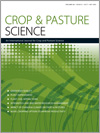The uses and nutritional value of soybean (Glycine max (L.) Merrill) oil are largely influenced by the levels and relative proportions in the seed of the five major fatty acids: oleic (OA), palmitic (PA), stearic (SA), linoleic (LLA), linolenic (LNA). The present study was undertaken to identify quantitative trait loci (QTLs) that are associated with fatty acid content (particularly OA) and to determine the effects of epistasis and the environment. The mapping population included 134 recombinant inbred lines (RILs) derived from soybean varieties Suinong10 and L-9. Phenotypic data of the two parents and their RILs were obtained at Harbin in 2013, 2014 and 2015. Nineteen QTLs associated with individual fatty acid content (six for OA, four for LNA, three for PA, two for SA, four for LLA) were identified. Twelve of these QTLs (four for OA, three for LNA, two for PA, one for SA, two for LLA) were detected with an additive main effect and/or additive × environment interaction effect in certain environments. Epistatic QTLs were identified for contents of OA (two QTLs), LNA (one QTL) and LLA (one QTL) in different environments, and which exhibited significant epistatic effects. Our observation of these additive and epistatic QTLs suggested that soybean possesses a complex network for fatty acid accumulation, which is valuable for marker-assisted selection.
How to translate text using browser tools
15 November 2017
Identification of quantitative trait loci underlying fatty acid content of soybean (Glycine max), including main, epistatic and QTL × environment effects across multiple environments
Ning Xia,
Depeng Wu,
Xia Li,
Weili Teng,
Xue Zhao,
Haiyan Li,
Yingpeng Han
ACCESS THE FULL ARTICLE

Crop and Pasture Science
Vol. 68 • No. 9
November 2017
Vol. 68 • No. 9
November 2017
additive effect
marker-assisted breeding
marker-assisted selection




